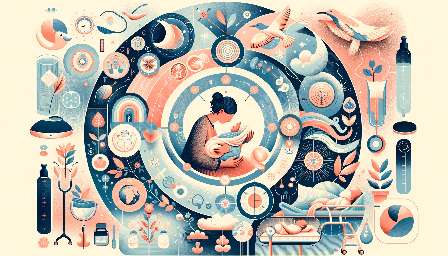Childbirth is a profound and transformative experience for women, but it is also associated with the potential for significant pain. While pharmacologic pain management options are available, many women choose to explore non-pharmacologic techniques to cope with the discomfort of labor and delivery. These techniques encompass a wide range of holistic and natural approaches that are designed to empower women and offer alternatives to medications. In this article, we will delve into the world of non-pharmacologic pain management techniques, exploring their efficacy, benefits, and how they can be integrated into the childbirth experience.
Understanding the Need for Non-Pharmacologic Techniques in Childbirth
Childbirth is a physiological and psychological event that can generate intense sensations and pain. While some women may opt for pharmacologic pain relief, others seek alternatives due to personal preferences, concerns about the side effects of medications, or a desire for a more natural birth experience. Non-pharmacologic techniques offer a diverse toolkit that can be tailored to meet individual needs and preferences, providing women with a sense of agency and control during labor and delivery.
Exploring Non-Pharmacologic Pain Management Techniques
There are numerous non-pharmacologic techniques that can help women manage pain during childbirth, including:
- Relaxation and Breathing Techniques: Deep breathing, visualization, and relaxation exercises can help women stay calm and focused, reducing the perception of pain.
- Hydrotherapy: Immersion in water, such as in a birthing pool, can provide buoyancy and warmth, which may alleviate discomfort and promote relaxation.
- Massage and Counterpressure: Gentle massage and the application of pressure to specific areas of the body can help relieve tension and provide relief from contractions.
- Acupuncture and Acupressure: Traditional Chinese medicine techniques can stimulate specific points on the body to reduce pain and promote a sense of well-being.
- Hypnosis: Hypnotherapy can help women enter a relaxed and focused state, enabling them to manage pain more effectively.
- Positioning and Movement: Changing positions and engaging in movement can help women find comfortable and effective ways to cope with labor pain.
- Education and Emotional Support: Information, emotional support, and continuous encouragement from healthcare providers, birth companions, and doulas can positively influence a woman's pain experience.
The Benefits of Non-Pharmacologic Techniques
Non-pharmacologic techniques for pain management during childbirth offer several potential benefits:
- Empowerment: By actively participating in non-drug pain relief methods, women may feel a sense of empowerment and self-efficacy during childbirth.
- Reduced Intervention: Some non-pharmacologic techniques can contribute to a smoother labor process and reduce the need for medical interventions, such as epidurals or labor augmentation.
- Flexibility and Customization: Non-pharmacologic techniques can be tailored to the individual's preferences and needs, providing a personalized approach to pain management.
- Enhanced Partner Involvement: Many non-pharmacologic techniques can involve partners and support persons, fostering a sense of connection and teamwork during childbirth.
- Postpartum Recovery: Some non-pharmacologic techniques may contribute to a more positive postpartum recovery experience for women, both physically and emotionally.
Integrating Non-Pharmacologic Techniques into the Childbirth Experience
For women considering non-pharmacologic techniques for pain management during childbirth, it is essential to discuss these options with their healthcare providers and birth support team. Open communication and collaboration will help ensure that the chosen techniques align with the woman's overall birth plan and medical needs. Additionally, childbirth education classes or sessions focused on non-pharmacologic pain management can provide valuable information and guidance, allowing women and their support persons to practice and become familiar with these techniques well before labor begins.
Conclusion
Non-pharmacologic techniques represent a valuable and empowering approach to pain management during childbirth. By embracing these holistic methods, women can navigate the intensity of labor and delivery with confidence, self-awareness, and a sense of active participation. When integrated effectively, non-pharmacologic techniques have the potential to enhance the childbirth experience and contribute to a positive and empowering transition to motherhood.


